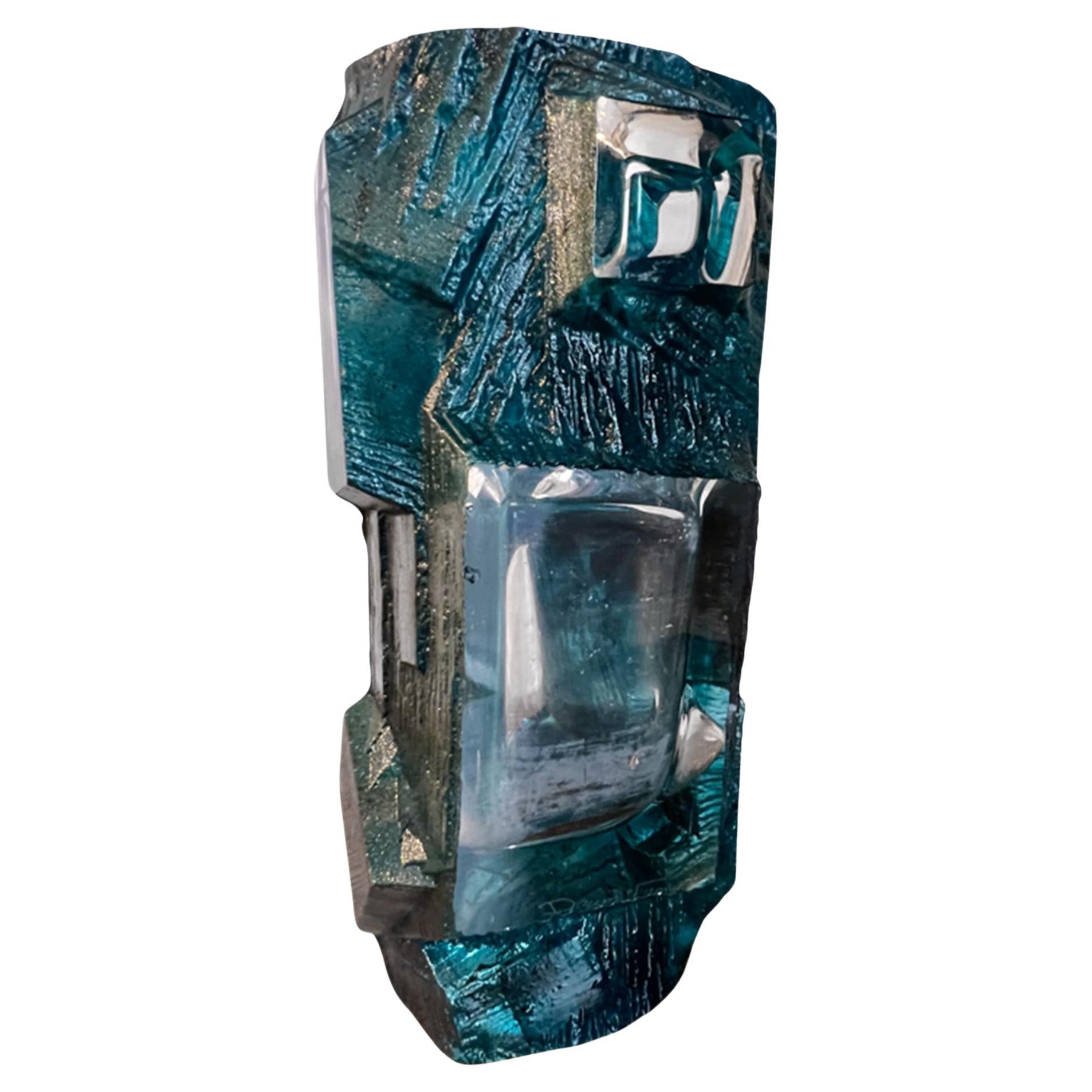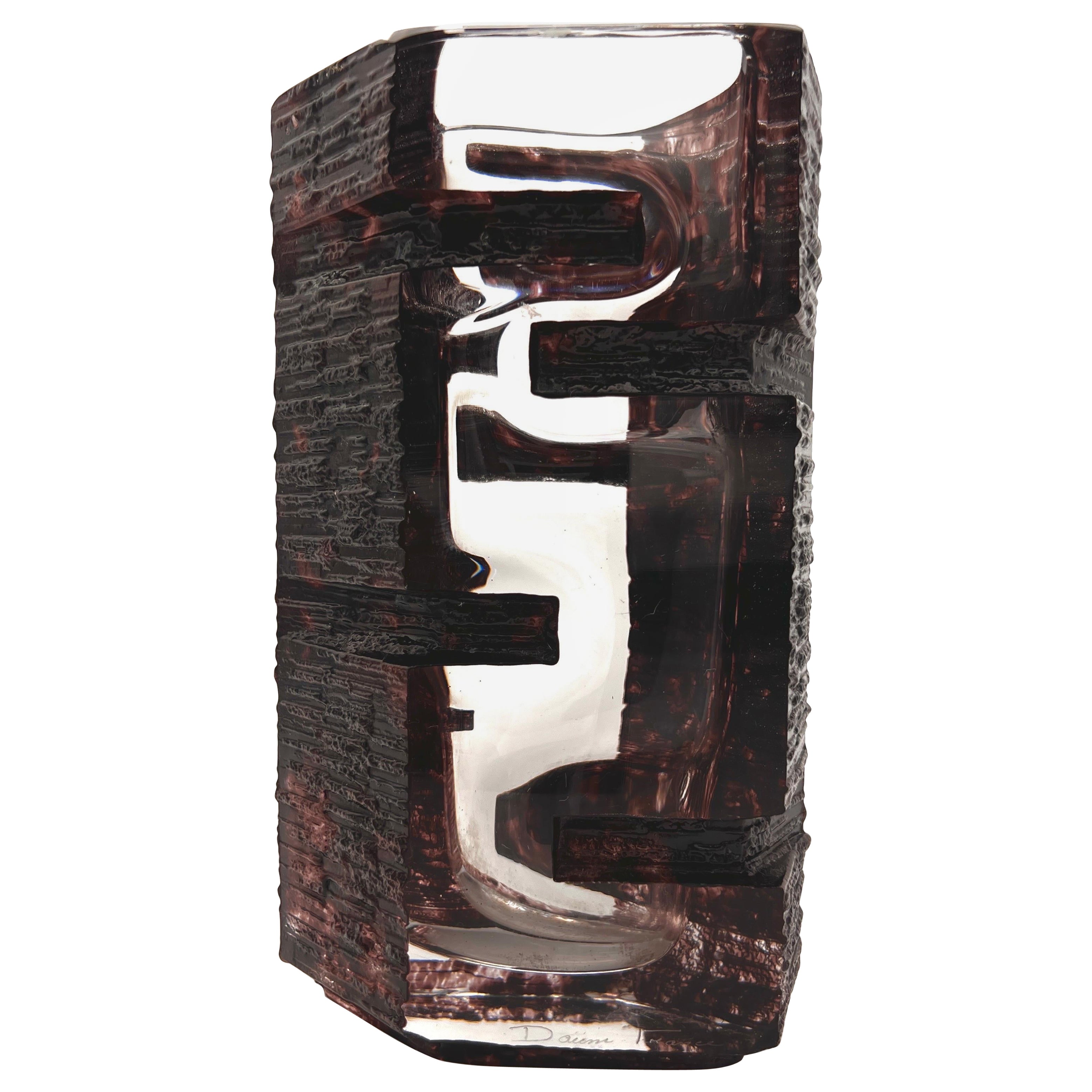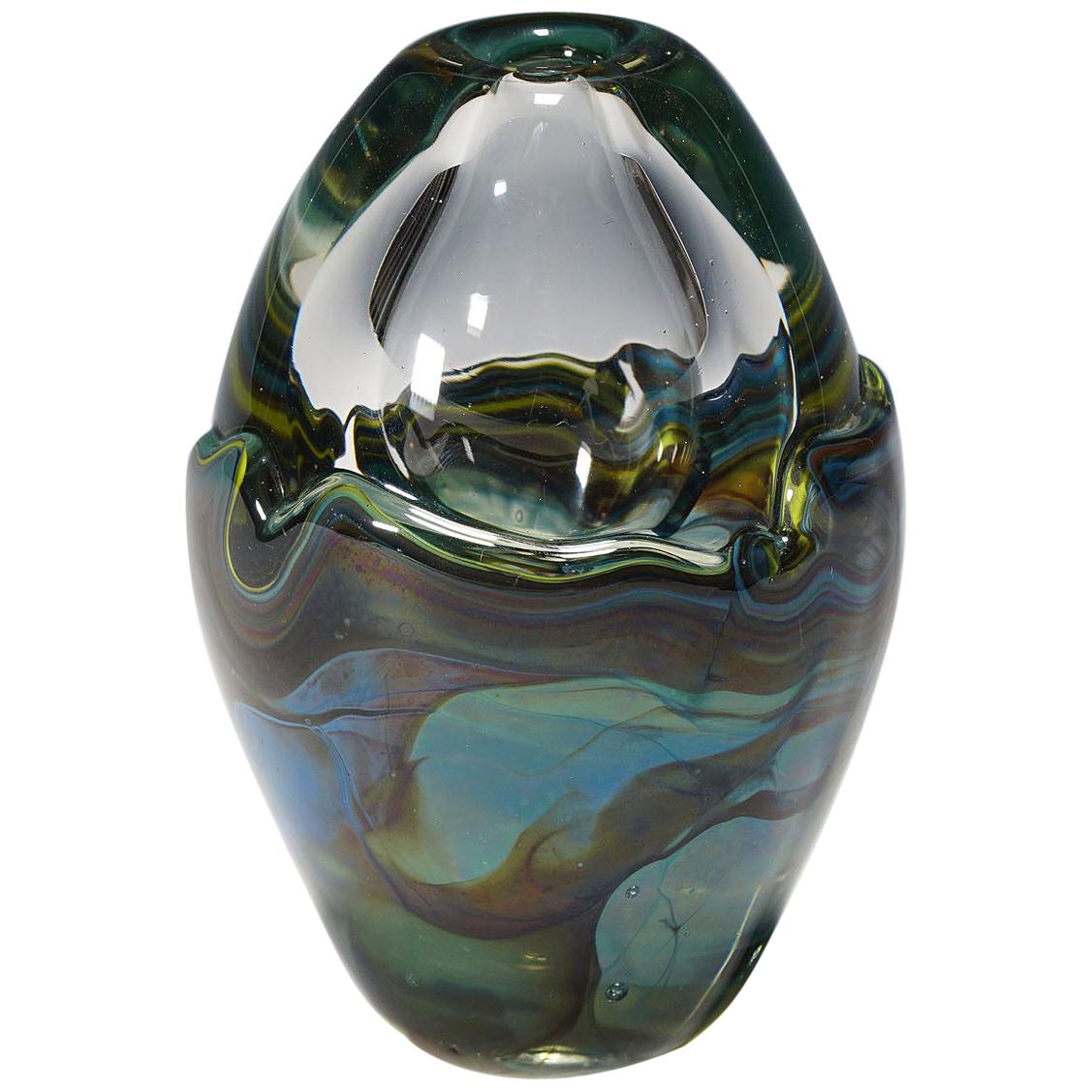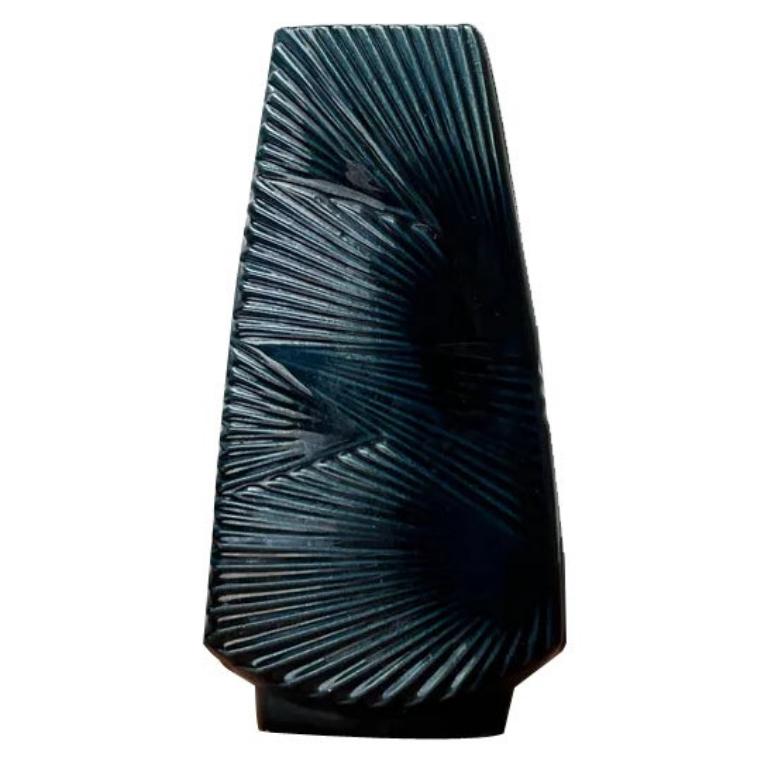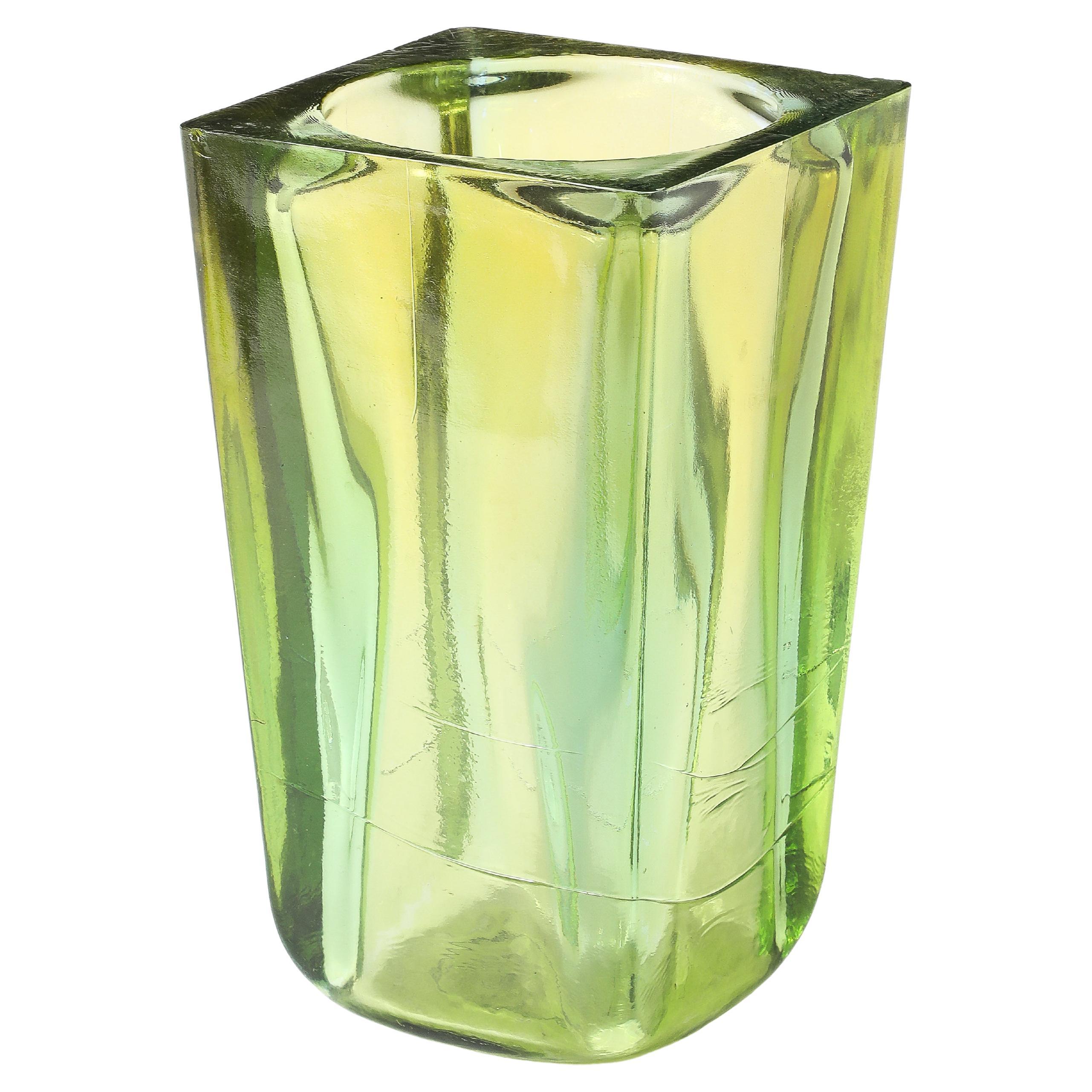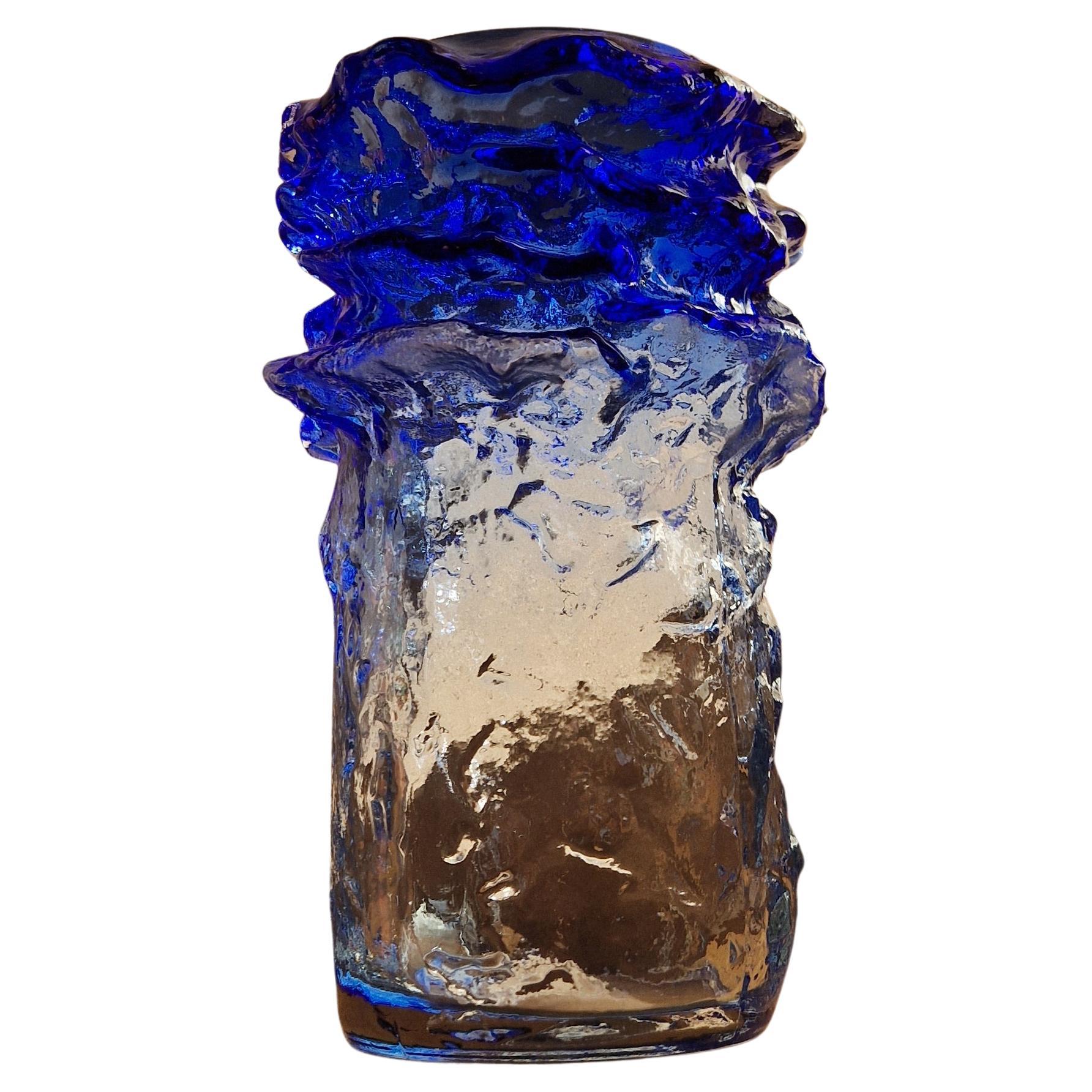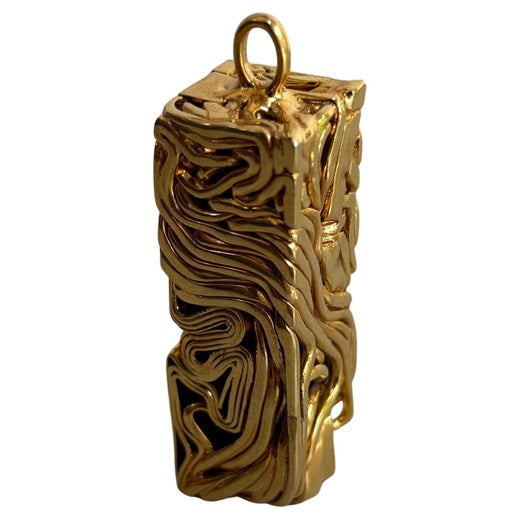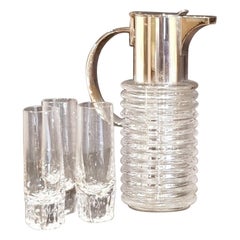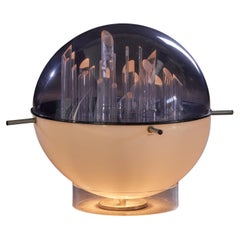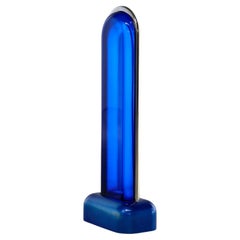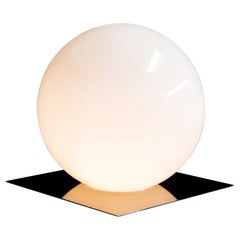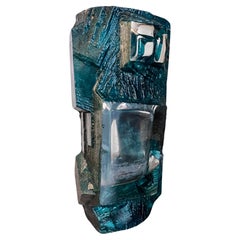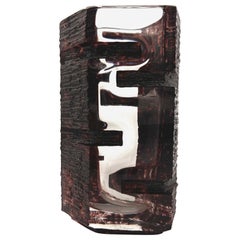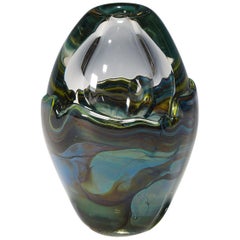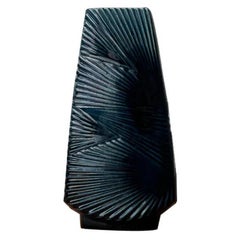Items Similar to Argos Vase by Cesar Baldaccini for Daum, France, 1970s
Want more images or videos?
Request additional images or videos from the seller
1 of 13
Argos Vase by Cesar Baldaccini for Daum, France, 1970s
$8,599.37
£6,372.02
€7,200
CA$11,895.80
A$13,110
CHF 6,863.52
MX$161,032.20
NOK 86,241.61
SEK 80,715.28
DKK 54,833.33
About the Item
The Argos vase by Cesar Baldaccini for Daum, France, 1970s, is a magnificent work of art that seamlessly blends form and function. Designed by the renowned French sculptor, Cesar Baldaccini, this multifaceted vase is a stunning example of his mastery of sculptural form.
Crafted by the esteemed French glassmaker, Daum, the vase features a highly polished, multifaceted surface that reflects and refracts light in a mesmerizing way. The facets are perfectly aligned and flawlessly executed, creating a sense of depth and texture that is truly breathtaking.
The vase is signed 'Daum France', adding a touch of authenticity and provenance to the piece. It is a true collector's item, sought after by art enthusiasts and collectors around the world.
As a functional piece, the Argos vase is ideal for displaying flowers or other decorative objects. Its sculptural form and multifaceted surface create a dynamic backdrop that enhances the beauty of any arrangement.
Overall, the Argos vase by Cesar Baldaccini for Daum, France, 1970s, is a masterpiece of design and craftsmanship. Its striking form, flawless execution, and exceptional provenance make it a highly coveted piece that is sure to impress and delight anyone who sees it.
- Creator:César Baldaccini (Sculptor)
- Dimensions:Height: 9.85 in (25 cm)Width: 5.52 in (14 cm)Depth: 5.52 in (14 cm)
- Style:Mid-Century Modern (Of the Period)
- Materials and Techniques:
- Place of Origin:
- Period:
- Date of Manufacture:1970
- Condition:
- Seller Location:Melbourne, AU
- Reference Number:1stDibs: LU2201334085322
César Baldaccini
César Baldaccini was born to immigrant Italian parents in Marseille and his life span was from 1921–98. He was considered to be one of the most important French artists and sculptors of the 20th century. Much of his work involved the compression of junk material and automobile material. He became associated with the 1960s Paris based Nouveau réalisme movement. Most importantly, Baldaccini just had a major retrospective at the Pompidou Center in Paris. His work is very collectible and desirable.
About the Seller
4.0
Vetted Professional Seller
Every seller passes strict standards for authenticity and reliability
Established in 2015
1stDibs seller since 2016
31 sales on 1stDibs
Typical response time: 9 hours
- ShippingRetrieving quote...Shipping from: Campbellfield, Australia
- Return Policy
Authenticity Guarantee
In the unlikely event there’s an issue with an item’s authenticity, contact us within 1 year for a full refund. DetailsMoney-Back Guarantee
If your item is not as described, is damaged in transit, or does not arrive, contact us within 7 days for a full refund. Details24-Hour Cancellation
You have a 24-hour grace period in which to reconsider your purchase, with no questions asked.Vetted Professional Sellers
Our world-class sellers must adhere to strict standards for service and quality, maintaining the integrity of our listings.Price-Match Guarantee
If you find that a seller listed the same item for a lower price elsewhere, we’ll match it.Trusted Global Delivery
Our best-in-class carrier network provides specialized shipping options worldwide, including custom delivery.More From This Seller
View AllCrystal and Silver Plate Decanter by Sergio Asti, 1965, Italy
By Sergio Asti
Located in Melbourne, VIC
Crystal and silver plate decanter for chilled drinks with ice container.
Designed by Sergio Asti, one of the top industrial designers who became...
Category
Mid-20th Century Italian Mid-Century Modern Pitchers
Space Age Lucite and Metal Sculpture Lamp by Gaetano Missaglia, Italy, 1970s
By Gaetano Missaglia
Located in Melbourne, VIC
The Italian Space Age acrylic glass sculptural lamp by Gaetano Missaglia, from the 1970s, is a stunning piece of lighting design that captures the es...
Category
Vintage 1970s Italian Space Age Table Lamps
Materials
Metal
Asteroid Lamp by Ettore Sottsass for Poltronova, Italy, 1968
By Ettore Sottsass, Poltronova
Located in Melbourne, VIC
The Asteroid Lamp is indeed a remarkable piece of design created by Ettore Sottsass in 1968. Ettore Sottsass was a prominent Italian designer and archite...
Category
20th Century Italian Table Lamps
Materials
Metal
Micol" Table Lamp by Sergio Mazza and Giuliana Gramigna for Quattrifolio
By Sergio Mazza, Quattrifolio
Located in Melbourne, VIC
Table lamp designed by Sergio Mazza & Giuliana Gramigna, 1971. White hand blown Murano glass shade supported by enameled metal base.
Category
Mid-20th Century Italian Mid-Century Modern Table Lamps
Materials
Murano Glass
Sculptural Buffet designed by Anacleto Spazzapan, Italy, 1990
By Anacleto Spazzapan
Located in Melbourne, VIC
Wire mesh in forged Iron Buffet designed by Italian Designer Anacleto Spazzapan. Born in 1943 in Luino, Varese, Spazzapan's work includes a variety of furniture items such as chairs,...
Category
20th Century Italian Post-Modern Buffets
Materials
Iron
"Modulo" Wall Lamp by Giuseppe Ravasio for New lamp, Italy, 1970s
By New Lamp, Giuseppe Ravasio
Located in Melbourne, VIC
Wall lamp "Modulo" by Giuseppe Ravasio for New Lamp, Circa 1970, Italy. Literature: Luce Lampade 1968-1973- il nuovo design italiano.
Category
Vintage 1970s Italian Mid-Century Modern Wall Lights and Sconces
Materials
Metal
You May Also Like
'Argos' Model Vase by César Baldaccini, Daum, France
By César Baldaccini, Daum
Located in London, GB
This fabulous glass vase was made by Daum in Nancy, France in the 1970s.
It looks very much like a piece of sculpture - no surprise given it's designer was César Baldaccini!
Titled...
Category
Vintage 1970s French Brutalist Vases
Materials
Glass
Cesar Baldaccini ( 1921-1998 ) Vase model Argos for Daum France 1970
By Daum, César Baldaccini
Located in palm beach, FL
Vase A by Cesar Baldaccini for Daum, France, 1970s, is a magnificent work of art that seamlessly combines form and function. Designed by renowned French sculptor Cesar Baldaccini, this multi-faceted vase is a stunning example of his mastery of sculptural forms. Made by renowned French glassmaker Daum, this vase features a highly polished, multi-faceted surface that reflects and refracts light in fascinating ways. The veneers are perfectly aligned and flawlessly executed, creating a breathtaking sense of depth and texture. The vase is signed "Daum France", which adds a touch of authenticity and provenance to the piece. This is a true collector's item, sought after by art lovers and collectors around the world. Functional, the Argos vase is ideal for presenting flowers or other decorative objects. Its sculptural form and multi-faceted surface create a dynamic backdrop that enhances the beauty of any arrangement. Overall, the Argos vase by Cesar Baldaccini for Daum, France, 1970s, is a masterpiece of design and craftsmanship. Its striking form, impeccable craftsmanship and exceptional provenance make it a highly coveted piece that is sure to impress and enchant anyone who sees it.
Cesar Badaccini (1921-1998)
His parents, Omer and Lelia Baldaccini, Italians of Tuscan origin, ran a bar in Marseille where César was born, with his twin sister Amandine, in 1921 in the popular district of Belle-de-Mai, at 71 rue Loubon, in the 3rd arrondissement1. "I am basically an absolute self-taught," he will say2. At the time, he designed and tinkered with carts for his little brother with cans. Nevertheless, after first working for his father (he also helped a butcher neighbor for a meager salary after leaving school at the age of twelve), he followed the courses of the École supérieure des beaux-arts de Marseille from 1935 to 1939; in 1937, he obtained three prizes, in engraving, drawing and architecture3.
Not mobilized during the war (he also escaped the STO), he lived on scams before settling in Paris to be admitted, in 1943, to the École nationale supérieure des beaux-arts with Michel Guino, Albert Féraud, Daniel David, Eugène Dodeigne and Philippe Hiquily, like him in the workshop of Marcel Gimond. In 1945, he returned to Marseille to marry Maria Astruc, with whom he set up a business (they divorced in 1959). He returned to Paris in 1946 where he occupied a studio in an old brothel at 21 rue de l'Échaudé, whose rooms, following the Marthe Richard law, had been assigned to students4. There he met Émilenne Deschamps, who would later become one of his muses.
Faced with the impossibility for him to work the stone, because of its cost, he turned to other materials3. From 1947, he worked on plaster and iron. In 1949, he was introduced to arc welding in an industrial carpentry in Trans-en-Provence and used lead in pushed sheets and welded iron wires. In 1951, he visited Pompeii and remained marked by the casts of the bodies of the inhabitants caught in the lava3. In 1952, he used inexpensive recovered materials and made his first sculptures in welded scrap metal: his means were then still modest. Thus, for lack of money and to afford marble, César will recover in the scrap dumps the materials of his first sculptures: tubes, bolts, screws that become insects or end up in the powerful curves of the Venus de Villetaneuse (1962).
In 1954, he exhibited at the Lucien Durand gallery in Paris and obtained the "collabo" prize for a sculpture entitled Le Poisson5, made in Villetaneuse, a city where he worked for a dozen years thanks to the help of a local industrialist, Léon Jacques6. He gained fame when his work was bought for 100,000 francs in 1955 by the State for the National Museum of Modern Art7. The same year, he exhibited at the Salon de Mai. The following year, the MNAM bought Chauve-souris from 1954 and the museum of modern art in the city of Paris Le scorpion from 1955. From 1954 (Torse, MOMA), he also made sculptures in welded metal, then in partially polished bronze, of busty women (Ginette, 1958, Victoire de Villetaneuse, 1965).
In 1956, he participated in the Venice Biennale then in the São Paulo Biennale and in the Documenta II in 1959. In 1958, he signed a contract with the Parisian gallery Claude Bernard3. In 1961, he approached Marino di Teana and joined the group of Nouveaux réalistes, a movement founded by art critic Pierre Restany8, including Arman, Jean Tinguely, Niki de Saint Phalle and Gérard Deschamps.
When he could afford a workshop in 1957, rue Campagne-Première in Paris, he married Rosine Groult-Baldaccini (met at the Beaux-Arts in 1948) with whom he had a daughter, Anna, a year later. He also begins to frequent the world of the In 1968, he created at the National Manufacture of Sèvres a porcelain Ashtray published in fifty copies. Made of porcelain with a semi-matt pearly cover, it represents a plaster mold used for the production of the pieces, and was produced from an original aluminum model. In 1971, during a premiere at the Lido, he found more media than him: Salvador Dalí, the master of extravagance. He debates the same year in Italiques with François Truffaut, Lucien Bodard and Asher Ben...
Category
Vintage 1970s French Mid-Century Modern Vases
Materials
Glass
Vintage Vase Designed by German Artist Udo Edelmann, 1988
Located in Berghuelen, DE
Vintage Vase Designed by German Artist Udo Edelmann, 1988
A vintage studio glass vase designed by the german sculptor and glass artist udo edelmann in 1988. The thick clear glass is...
Category
Late 20th Century German Mid-Century Modern Vases
Materials
Art Glass
Mid-Century German Vase from Übelacker Keramik, 1960s
Located in Hamburg, DE
Mid-Century German Vase from Übelacker Keramik, 1960s, in Very Good conditions. Designed 1960 to 1969 This piece has an attribution mark, I am sure that it is completely authentic an...
Category
20th Century German Mid-Century Modern Vases
Materials
Ceramic
Large Blenko Cast Vase, USA 1960's
By Blenko Glass
Located in New York, NY
Solid cast glass vase by Blenko in green yellow hues.
Category
Mid-20th Century American Mid-Century Modern Vases
Materials
Glass
Vase, Kai Blomqvist, Kumela, 1960's
By Kaj Blomquist
Located in Stockholm, SE
A Kai Blomqvist vase. Glass, made for Kumela, Finland 1960/70's.
Signed and marked Kumela. Good condition. Wonderful free form, almost looks like a sculpture. The vivid colours of b...
Category
Mid-20th Century Finnish Mid-Century Modern Vases
Materials
Glass
More Ways To Browse
1970s French Vase
Cesar Baldaccini Daum
Daum Cesar
Daum Cesar Baldaccini Vase
Vase Argos Daum
Studio Pottery American
Funnel Vase
German Metalworks Objects
Red Crystal Vases
Red Flower Vase
Tiffany Favrile Glass
Trumpet Glass
Blue Studio Pottery
Glass Lily Vase
Japanese 20th Century Blue White Vase
Japanese Meiji Period Silver Vase
Murano Cenedese Vetri
Oxblood Vase
